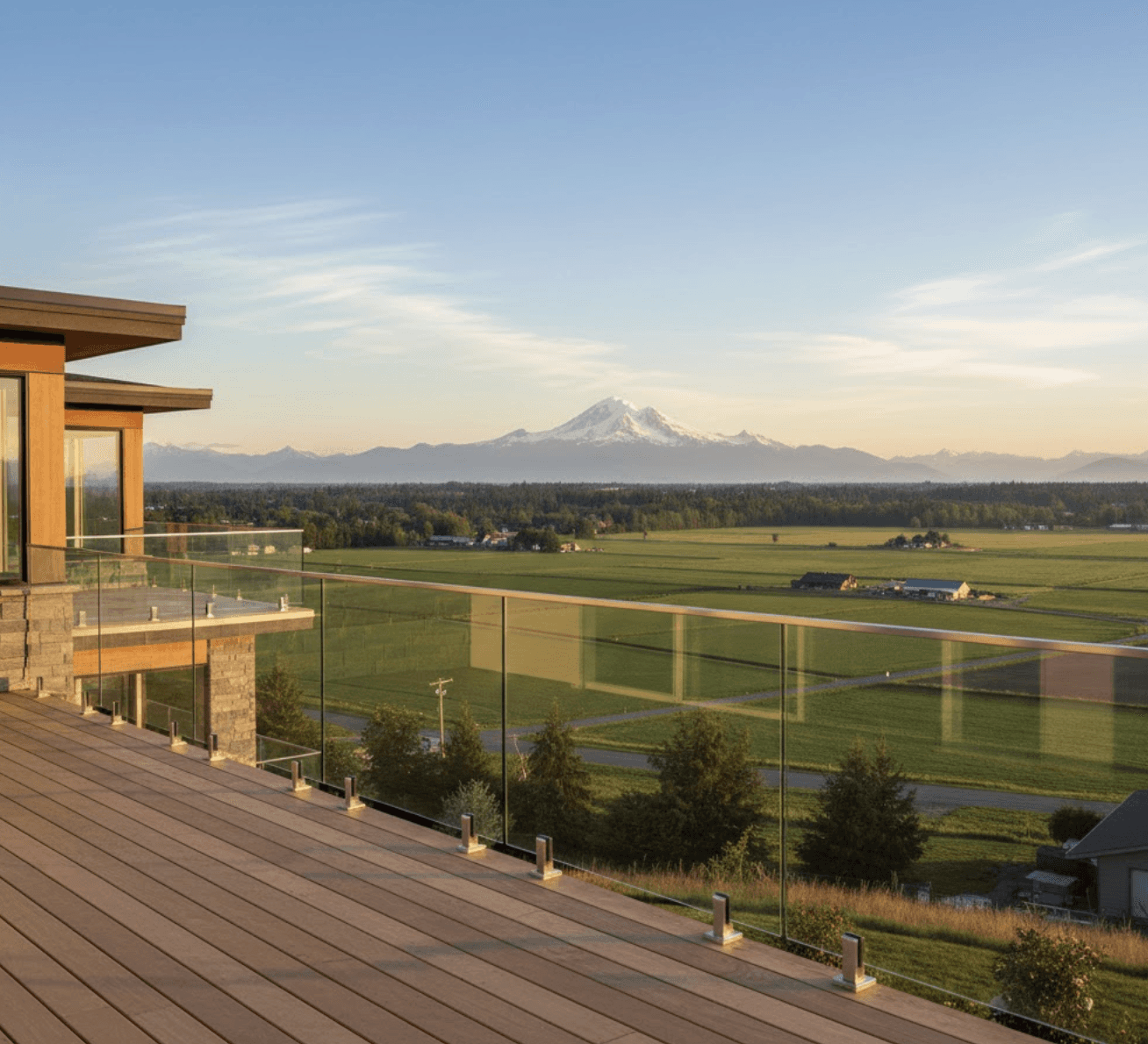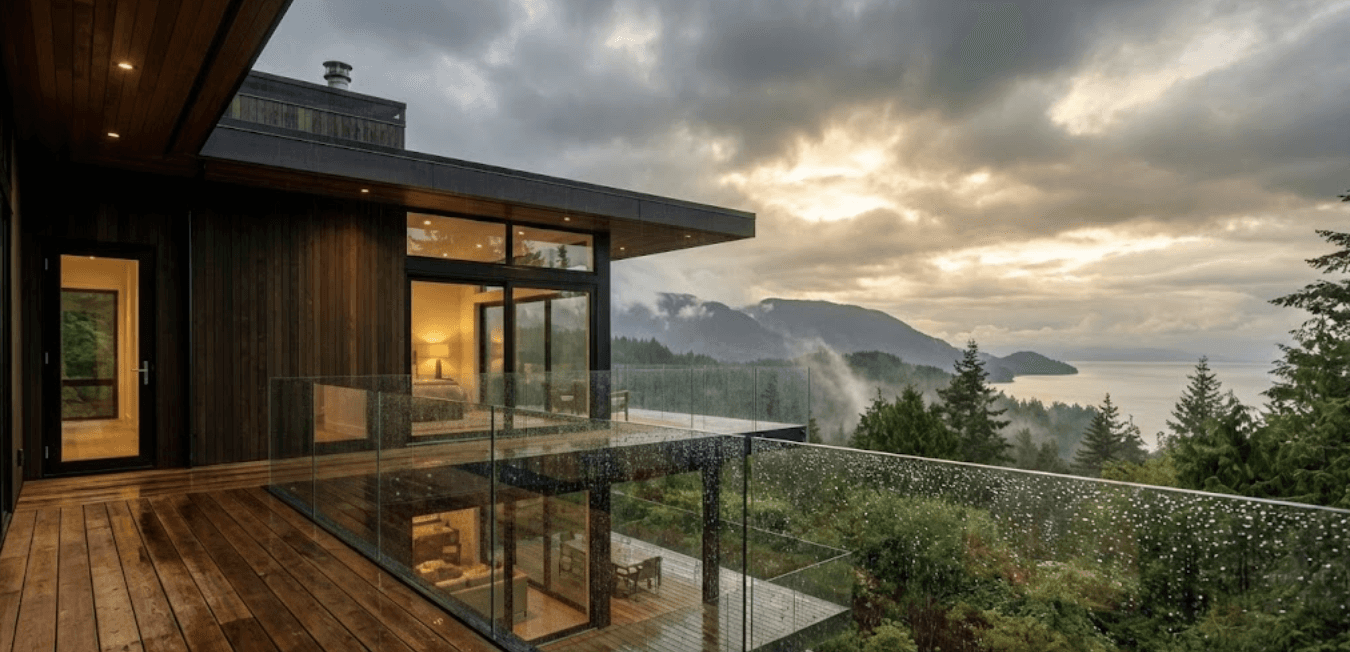BC Building Code Requirements for Glass & Metal Railings – A Vancouver & Fraser Valley Guide
Nov 10, 2025
Why the BC Building Code Matters for Your Home
Every deck, balcony, and stair system in British Columbia must comply with the BC Building Code (BCBC). These rules are not simply red tape; they exist to protect homeowners, ensure structural safety, and maintain property value.
For glass and metal railings, the Code defines minimum heights, load resistance, glazing standards, and installation methods that prevent injuries and structural failures.
Non-compliant railings can delay occupancy permits, reduce resale value, or even void insurance coverage. Tenmar’s team ensures every installation; from residential decks in Langley to high-rise balconies in Vancouver; meets or exceeds current BCBC standards.

Key Sections of the BC Building Code You Should Know
The BCBC divides construction standards into several parts. For railings, the following are most relevant:
Division B, Section 9.8: Stairs, Ramps, Handrails and Guards
Defines when guards are required, their minimum height, and allowable openings.Guards must be installed where there is a drop of more than 600 mm (24").
Minimum guard height on decks up to 1.8 m (5′10″) above grade: 900 mm (36").
For decks or balconies above 1.8 m, the minimum height increases to 1,070 mm (42").
(Source: BC Building Code 2024 – Division B, 9.8)
Section 9.6 — Glass and Glazing
Requires all glass used in guards to be safety-rated glazing that conforms to:CAN/CGSB-12.1-M90 for tempered or laminated safety glass
CAN/CGSB-12.20-M for structural design of glass in buildings
These standards ensure that glass panels can safely withstand impact and wind loads without failure.
Dimensional & Material Requirements at a Glance
Feature | Residential Minimum | Notes |
Guard Height | 900 mm (36") up to 1.8 m drop 1,070 mm (42") over 1.8 m | Applies to decks, balconies, and terraces |
Opening Size | Less than 100 mm (4") | Prevents child entrapment |
Glass Type | Tempered or laminated safety glass | Must meet CAN/CGSB-12.1-M |
Load Resistance | Minimum 0.5 kN/m horizontal load | Engineer verification required for topless systems |
Tip: If your railing does not have a continuous top rail (“topless” glass systems), it must include engineer-sealed drawings confirming compliance. (City of Kamloops “Glass Guardrail Requirements” bulletin.)

Regional Considerations: Vancouver & the Fraser Valley
Coastal conditions affect railing performance. In Metro Vancouver and the Fraser Valley, higher wind exposure and salt air demand durable mounting hardware, corrosion-resistant finishes, and careful structural detailing.
Tenmar systems are engineer-designed for coastal environments. We select stainless or powder-coated hardware, precision-fit tempered glass, and verify load compliance under BCBC Part 9.8 and Part 4 (Structural Design). Whether your project involves a Sechelt ocean-view balcony or a Surrey townhouse terrace, our installation process ensures full conformity with BCBC and local municipal inspection standards.
Learn more about our Custom Glass Railings designed for long-term coastal durability.
Step-by-Step Compliance Checklist for Homeowners
Use this quick self-audit before starting or upgrading your railing system:
Measure height: Is your deck or balcony more than 600 mm above grade?
→ If yes, a guard is required.Confirm guard height: 900 mm for low decks, 1,070 mm for elevated decks.
Inspect openings: No space larger than 100 mm between vertical elements.
Engineer review: Required for frameless or custom curved glass systems.
Installation verification: Mounts anchored to structural framing, not surface decking.
Documentation: Keep engineer drawings and material certificates for inspection.
How Tenmar Builds to Code
At Tenmar, every railing system is designed, engineered, fabricated, and installed in alignment with the BC Building Code. Our compliance process includes:
Engineer-sealed shop drawings for custom or frameless glass systems.
Structural hardware selected for coastal and high-wind exposure zones.
On-site verification during installation for proper height and anchoring.
Full documentation for municipal building inspectors.
Our goal is simple: safe, code-compliant, architecturally refined railings that stand the test of time and weather.
Frequently Asked Questions
Do I need a railing if my deck is under 24 inches high?
Not always. The BC Building Code requires guards only when the vertical drop exceeds 600 mm. However, many homeowners choose to install a low-profile railing for added safety and aesthetics.
Can I install frameless glass railings without an engineer?
No. Frameless or “topless” systems must include engineer-sealed shop drawings verifying load capacity and glass specification per CAN/CGSB standards.
Does the BC Building Code apply to existing homes?
Yes, for any renovation, addition, or deck replacement, your new railings must meet the current Code. Older installations may be grandfathered, but upgrades trigger modern compliance requirements.
What’s New in the 2024 BC Building Code for Railings
The 2024 edition introduced updates for guard load resistance and glass design standards, reflecting seismic and wind-zone improvements. These revisions strengthen structural integrity and occupant safety; particularly for frameless and multi-panel systems used in contemporary homes.
For detailed changes, see the BC Building Code 2024 Revision Summary.
Stay Compliant with Confidence
BC’s building code protects your home and its occupants, but interpretation can be complex. Tenmar’s local team simplifies compliance through design-build expertise and fully engineered railing systems.
Whether you’re building a new deck in Maple Ridge or upgrading a Vancouver penthouse balcony, Tenmar ensures your glass or metal railings are engineered, inspected, and installed to BCBC standards.












